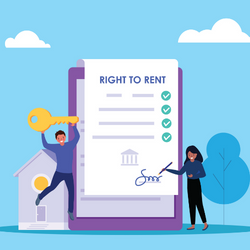Right to Rent code of practice updated

All landlords and agents in England have a legal responsibility to make comprehensive checks on tenants to prevent anyone without lawful immigration status from accessing the private rented sector. Today, the Home Office have released an updated version of the Right to Rent guide for landlords and letting agents. This updated sixth version comes into force on 13th February 2024.
Non-compliance became more costly.
This latest Right to Rent guidance introduces changes to the penalties faced by landlords who are found to be housing illegal migrants without the right to be in the UK, including increases to the maximum civil penalty:
- The fine for the first breach has increase from £80 per lodger to £5,000 and from £1,000 per occupier up to £10,000.
- Repeat offenders will face fines of up to £10,000 (increased from £500) per lodger and £20,000 per occupier (increased from £3,000)
No change to the way landlords can make Right to Rent checks.
This latest guidance reinforces that landlords must complete a Right to Rent check before commencing a tenancy and must not discriminate against any applicant. There are 3 different ways for landlords to make that check:
- A manual Right to Rent check. This option is open for all applicants.
- A Digital Right to Rent check. This option is available for British and Irish citizens only and must be carried out through an Identity Service Provider or IDSP.
- A Home Office online Right to Rent check. This option is suitable for non-British and non-Irish citizens who hold an eVisa as proof of their immigration status.
To find out more about how technology can support with all these Right to Rent checks, please read our Right to Rent compliance page.
Sign up to receive updates
Receive notifications from TrustID direct to your inbox. Simply fill out your email address in the form below.
Want to find out more?
We’d be really happy to chat through your requirements and offer advice on the best service for your business.
Tel: 0118 466 0822 or email us.
Request a callback


